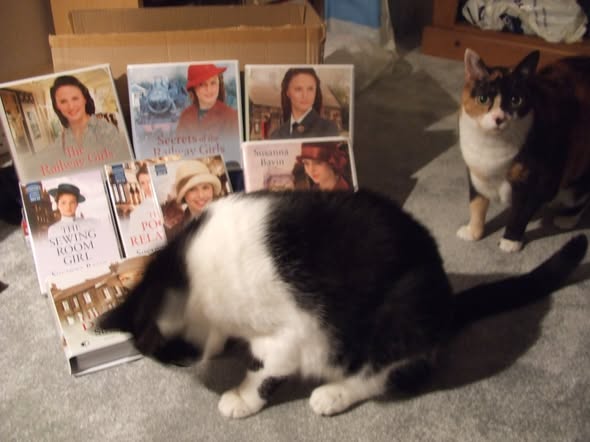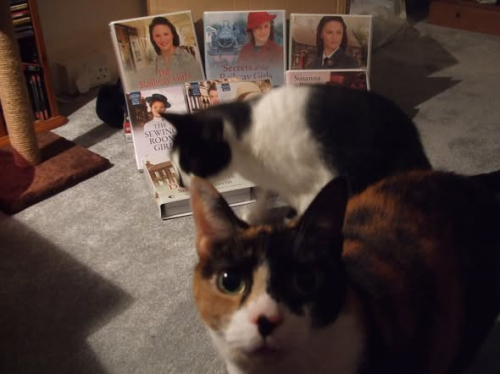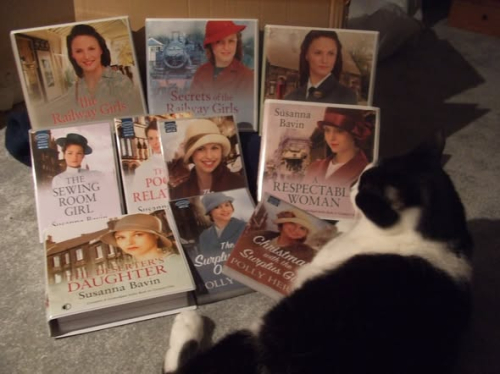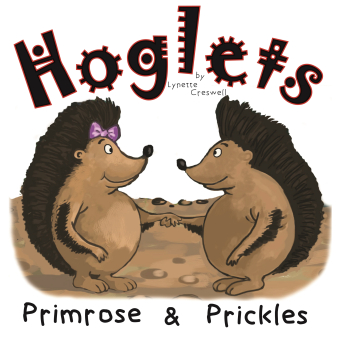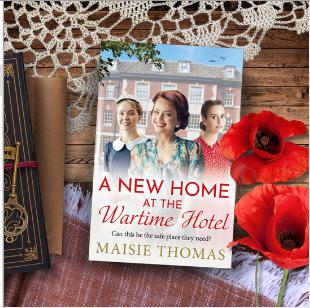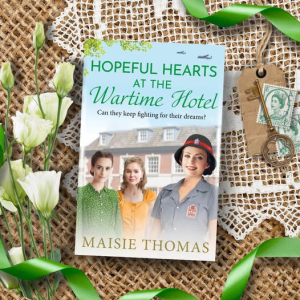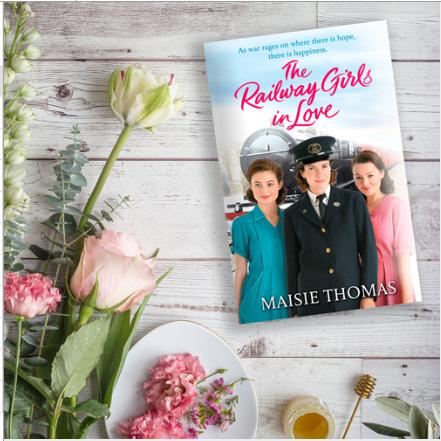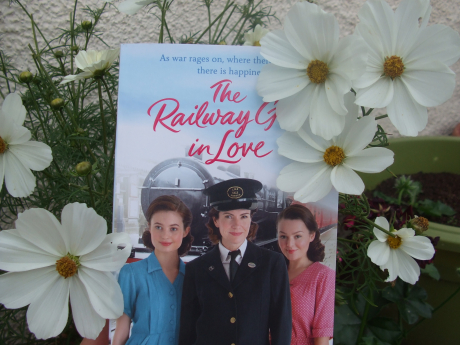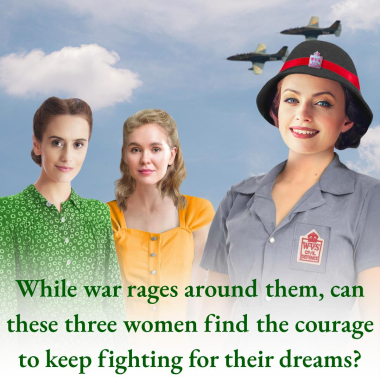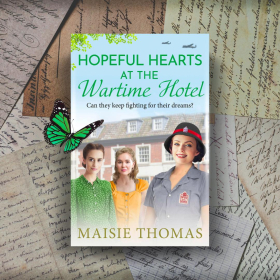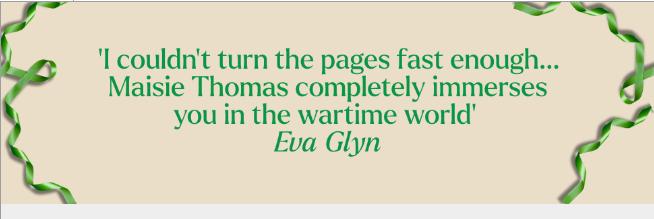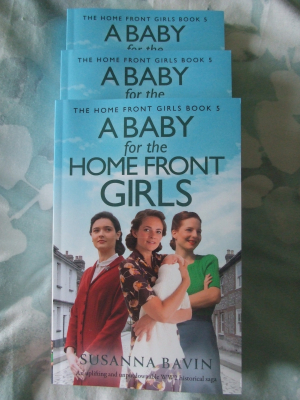Readers make all sorts of assumptions about authors and publishing.
'Did you publisher throw you a lovely party for your publication day?' is a common question.
'And of course, you chose/designed your own cover, didn't you?' is another.
So I've decided to run a series of blogs addressing these assumptions. If you (either as a reader or as an author, published or unpublished) have a matter you'd like me, as an experienced traditionally publsihed author, to write about, just let me know - either by leaving a comment here or through my Susanna Twitter page or else via my Maisie Thomas FB page.
Today's subject is titles. Readers automatcally assume the author chooses their own titles - and in some cases, they do - but by no means always. I can't give you any statistics to back this up, but I'm happy to share my own experience and you can draw your own conclusions.
Here goes!
* * * *
Who Chooses the Title for Your Book?
It's reasonable to assume the author chooses the title. After all, they wrote the book, didn't they? But there are other factors at work - mainly, marketing - and the choice about the title of your book is often made by other people.
Here's an extreme example. I once planned a book in great detail - several pages of synopsis. My editor was happy with it. She was the one who had chosen a title - let's call it ABC - for me to plan my story round. Then the plan was sent to Acquisitions, and they sent back a message saying, 'We'd rather have XYZ as the title, so please can you rewrite the plan accordingly.'
Okay, that's an extreme example - and, no, I'm not going to tell you which book it was - but it shows you how these things can work out.
Here is a list of the books I've had published so far, and I'm going to tell you who chose the titles. Buckle up, everyone!
Susanna Bavin titles
My first four books, all standalone sagas, were published by Allison & Busby, and the titles were mine all mine. At the time, I didn't know any better, but now I realise how very lucky I was, and I'll always be grateful to A&B for being happy to run with my choices - The Deserter's Daughter, A Respectable Woman, The Sewing Room Girl and The Poor Relation.
My other Susanna books are the Home Front Girls series. With a 'Girls' series, the standard format is for book 1 to be The 'Whatever' Girls and after that choices are made that broadly reflect the content of the story.
The Home Front Girls was the standard series opener. The rest, Courage for the Home Front Girls, Christmas for the Home Front Girls, A Wedding for the Home Front Girls and A Baby for the Home Front Girls were all chosen on my behalf.
Polly Heron titles
Again, The Surplus Girls was the standard series opener. I had chosen titles for books 2 and 3 at the planning stage. (The full plan ran to about 30 pages - I'll blog about that particular planning process another time.) It doesn't matter now what my titles were, because they weren't chosen.
Book 2 became The Surplus Girls' Orphans and book 3 became Christmas With the Surplus Girls. When you write in a book, you generally give it a holding title, which is your chosen title, knowing that it might well be changed after you hand in the book. I was having trouble coming up with a holding title for book 4 and it was my agent who thought of New Beginnings for the Surplus Girls - which I loved, and I'm happy to say, so did the publisher.
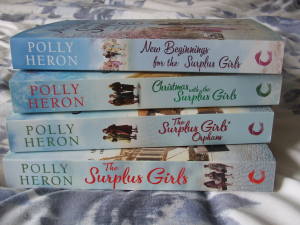
Maisie Thomas titles
The Railway Girls series
With the Railway Girls books, book 1 was, of course, The Railway Girls. With books 2 and 3, I made some suggestions, based on looking at the titles in other 'Girls' series. I picked out Secrets of the Railway Girls and The Railway Girls in Love. It so happened that each title would do equally well for both books, and I had to choose which to assign to each one. (Incidentally, there was some discussion between my editor and the marketing department about a possible apostrophe - Secrets of the The Railway Girls or The Railway Girls' Secrets, but the use of apostrophes in titles is another subject all together!)
In the rest of the series - Christmas with the Railway Girls, Hope for the Railway Girls, A Christmas Miracle for the Railway Girls, Courage of the Railway Girls, Christmas Wishes for the Railway Girls and Springtime with the Railway Girls - all the titles were chosen by the editor of the time.
The Wartime Hotel series
Dead simple! All three titles were chosen by my editor - A New Home at the Wartime Hotel, Hopeful Hearts at the Wartime Hotel and (decided upon just this week, with publication in March 2026) Dreams Come True at the Wartime Hotel.
So there you have it. Something else that's probably worth saying is that, when an author write a series, it isn't just each individual book title that s/he doesn't necessarily get to choose, they possibly won't even get to choose the series name either....


